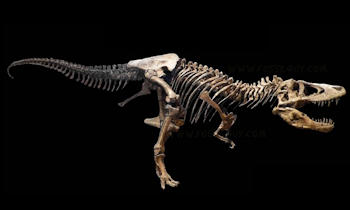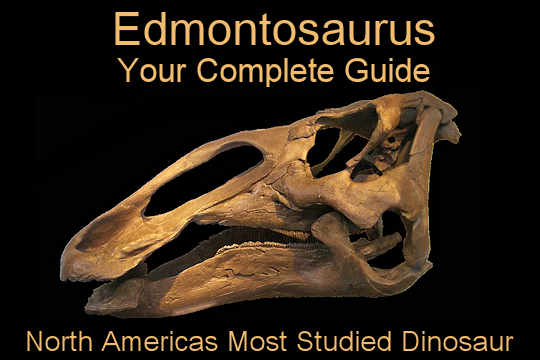Paleontology News
Study confirms Spinosaurus lived in the water.
A new study examining the relative abundance of Spinosaurus teeth show it lived in the river systems and and not along the banks.
Spinosaurus was the largest dinosaur of the North Africa Kem Kem river systems in the Cretaceous.
Previous research shows Spinosaurus had aquatic adaptations, such as the teeth, skull, legs, tail, and bone density.
This new research looks at the abundance of Spinosaurus teeth compared to other dinosaurs and aquatic animals.
The research finds the abundance of Spinosaurus teeth compared to other animals can only be explained if Spinosaurus lived in the water, and not along the waters edge.
New Research shows Spinsaurus lived IN the water, not along the waters edge.
This article is based on a Press Release by the University of Portmouth - September 18, 2020, and the related Journal Article (Beevor et al, 2020)

Size-comparison of selected Spinosaurus individuals from the Kem Kem Beds compared to a human, including a juvenile and the largest known specimen. Image credit: Figure 3 from Maganuco S. and Dal Sasso C., 2018.
Spinosaurus is the largest theropod to roam the Kem Kem river systems of North Africa 100 million years ago during the Cretaceous. Unlike the other dinosaurs of the Kem Kem, this 15-meter (49 foot) animal is suspected to be an aquatic dinosaur.
Paleontologist Nizar Ibrahim published two papers, one in 2014 and one in 2020, showing various aquatic aspects of the dinosaur. Paleontologist Thomas Arden also published a paper in 2019 supporting the aquatic lifestyle of Spinosaurus.
These adaptations include teeth suited for grasping fish, a crocodile-like skull containing water pressure receptors, eyes located toward the top of the skull, a tall and long tail designed for water propulsion, hind limbs designed for swimming, bone density similar to aquatic mammals, and other adaptations.
Although there has been some pushback by other paleontologists, arguing it was not completely aquatic, this new research lead by Thomas Beevor helps confirm the aquatic lifestyle. Instead of looking at physical traits of Spinosaurus, Beevor and his team looked at the sheer abundance of Spinosaurus teeth compared to other dinosaurs and other aquatic animals in the river systems. They sampled 1200 fossil teeth from the Kem Kem beds and sorted them.
Aaron Quigley, a co-author, said "We sorted all 1200 teeth into species and then literally counted them all up. Forty-five per cent of our total find were Spinosaurus teeth." Less than 1 percent of the teeth were from land dinosaurs. The number of Spinosaurus teeth were even greater than some of the aquatic animals of the river system.
David Martill, another co-author, said "The enhanced abundance of Spinosaurus teeth, relative to other dinosaurs, is a reflection of their aquatic lifestyle. An animal living much of its life in water is much more likely to contribute teeth to the river deposit than those dinosaurs that perhaps only visited the river for drinking and feeding along its banks."
If Spinosaurus only lived along the banks and entered the water to hunt, the teeth would not be nearly as common. The abundance shows Spinosaurus actually lived in the water and not at the water's edge. Spinosaurus was a true river monster!

This is Figure 4 from Beevor et al, 2021 showing sample Spinosaurus teeth. The first two images is a spinosaurus cross section, the third image isa bag full of broken Spinosaurus teeth.
Learn all about Spinosaurus here
References:
Beevor, Thomas et al. (2021). Taphonomic evidence supports an aquatic lifestyle for Spinosaurus. Cretaceous Research 117: 104627; DOI: 10.1016/j.cretres.2020.104627
Ibrahim, N., Maganuco, S., Dal Sasso, C. et al. (2020). Tail-propelled aquatic locomotion in a theropod dinosaur. Nature.
https://doi.org/10.1038/s41586-020-2190-3
Ibrahim, N., Sereno, P. C., Dal Sasso, C., Maganuco, S., Fabbri, M., Martill, D. M., Zouhri, S., Myhrvold, N., Iurino, D. A. (2014). Semiaquatic adaptations in a giant predatory dinosaur. Science.
Maganuco S, Dal Sasso C. (2018). The smallest biggest theropod dinosaur: a tiny pedal ungual of a juvenile Spinosaurus from the Cretaceous of Morocco. PeerJ 6:e4785 DOI: 10.7717/peerj.4785.
University of Portsmouth Sept. 18, 2020. Dino Teeth Research Prove Giant Predatory Dinosaur Lived in Water. PRESS RELEASE.
Recommended Dinosaur Books and Educational Items:
Additional Images:

This is Figure 5 from Beevor et al, 2021 showing sample Spinosaurus teeth. The first two images is a spinosaurus cross section, the third image isa bag full of broken Spinosaurus teeth.

A spinosaurus tooth from the Kem Kem beds. Notice the Peg like shape that is ideal for grasping fish.
Browse More Paleontology News

High quality Dinosaur teeth by Fossilera















